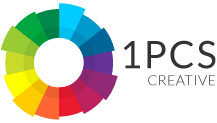
A website can often be the very first impression someone has of a business. Therefore, it is important with the website homepage design that it delivers.
In fact studies show it only takes 0.05 seconds for a visitor to your website to make up their mind. It shows the importance of having a good homepage for your website.
If you have been finding your website has high bounce rate or not generating the number of enquiries you expected, the homepage is one of the essential areas to get right to improve your results.
The homepage design should compel visitors to continue further, whether that be to find out more about your business, get in touch or make a purchase. To have a strong homepage on a website involves many key elements which we will cover in our blog post below.
Ben Webster
Creative director at 1PCS. Addicted to design, SEO, pizza and helping companies big and small succeed online.
Share This Article
Subscribe for updates
Branding
Before beginning the design of your website homepage have a full review of your current branding and marketing materials to ensure that not just for your website homepage design, but for all your pages going forward are in keeping with any brand guidelines originally published. If brand guidelines do not exist, take a look at your logo, colours and fonts you have used previously.
When designing the homepage it is worth referring to any examples of other websites you do or don’t like to refer to. Along with taking note of any important details which need to stand out, for example your calls to action which we cover in more detail below.
With the use of white space, images and high contrast colours it can all help to draw a visitors eye to the right prominence on the website homepage design. Fonts alone is one area that can lead to a high bounce rate from potential customers.
For example whilst a script style font can look elegant and give the right look and feel for a logo or perhaps an editor’s note on a blog post. As main body copy visitors want a font which is easy and simple to read. Especially with many people are viewing websites on their mobiles.
Hero
We wish we were referring to being a superhero here, but what we mean by Hero is the top section visitors will see as soon as they come to the website homepage. When planning your website homepage design this is one of the most important elements to get right.
This should include a hero image which reflects purely by seeing that one image what your business offers. As the saying goes, a picture says a thousand words. Make sure the hero image is visually pleasing, but also takes into account file size. Studies have found page load times longer than 2 seconds, result in a 50% drop in conversion rates.
Therefore whilst your hero image should be high quality, it also needs to be compressed correctly to ensure on mobile and other devices it does not slow down load time.
The best websites will include in the Hero area of the website homepage a simple headline and potentially a sub headline if appropriate. If you want more conversions your headline should be direct and to the point. This should be your value proposition.
Picture your customers problem and how your business can fix it. Not only that, how you can do this better than your competitors. This should be clear from your headline and sub headline.

We don’t mean this type of hero. The hero section is key to get right with your image and headline.
Focus Points
When you have put your heart and soul into your company from day one it can be tempting on a website homepage to want to put more information than visitors will need at this point on your website. For example they are unlikely to be looking for information on when the company begun, its history or lengthy information about your services or products.
Visitors to your website homepage want to find quickly the solution to their problem. It is likely most visitors will have a common pain point or there are a few focal areas which your target audience are most likely to need from your company.
We would recommend focusing on no more than 3-4 services or product ranges on your website homepage. As part of a well designed page it is best to keep this area of the web design simple with just a brief description.
Visitors can go onto read more about each focus point on another web page. Don’t forget to decode jargon as they are unlikely to have the same knowledge as you. This can always be expanded on in articles on your website such as blog posts.
When directing people away from your website homepage any links should be kept to internal links. The aim is whilst a visitor is still discovering your company to keep them on your website rather than direct them elsewhere.
If you are unsure of the right structure for your company take a look at real life examples to get some more inspiration from the best homepage designs. This doesn’t need to be just in your industry, a great example can come from anywhere to help with your site design. It is worth having a look at other homepage design examples.
Navigation
When it comes to navigation you don’t want to lose potential customers because they struggled to find what they are after on your website. Having a simple and easy to use navigation bar is important.
Typically most navigation bars would be located at the top of the page and is easily accessible throughout the website. A site’s success is helped by visitors being able to quickly find what they need at any point on your website, it shouldn’t feel like a maze to get navigate and that includes getting back to the home page again.
When choosing the order for the navigation bar we would recommend planning a hierarchy of importance for your customers. If you already have a website you can dig deeper to look at your data in Google Analytics. This will show when a visitor arrives on your website homepage where they typically would go onto.
This could be testimonials for social proof or a particular service or product range comes up as the most visited. Use this information to create an intuitive navigation bar for potential visitors. With the most important and common elements at the beginning. Making it as quick as possible for visitors when they come to your website homepage to find out more.

Don’t lose out on potential customers because they struggle to navigate your website.
Call To Action
The ultimate aim for most businesses is for their website to have more conversions with visitors converting from a visitor to a customer. The most effective way to do this is to have clear primary calls to action which are seen prominently on your website homepage.
Examples of this would include ‘contact us’, ‘buy now’, ‘make an enquiry’. ‘sign up for updates’. Any calls to action should be direct and consistent across the website pages. It will also be of benefit to include a ‘Contact us’ as part of the navigation bar, as well as within the main design of the website homepage.
Other options for your call to action is to include contact forms. This is an easy to complete form as part of your homepage design. This can include asking for their full name, phone number, email and space for them to enter their enquiry for you to get in touch with them.
People do their search online at all times of the day and night, therefore they may not be able to phone you when they are looking at your website or not have time right now. Therefore contact forms are a great method to drive more conversions for your business.
On your homepage design it may also be suitable to include secondary calls to action if you have multiple areas you are able to problem solve for your website visitors. This would be shown further down your homepage design, with the primary cta being the shown first in the order of priority.
Another key element of your web design for your website homepage is to include social proof. By this we are referring to including testimonials and if appropriate any relevant awards. Including these help with building trust to show visitors why they should use you ahead of your competitors.
A study showed that 79% of consumers trust testimonials they read online just as much as a personal recommendation from a friend. In order for the testimonials you include for your business to help with building trust.
The testimonials you choose should show how you helped to solve a common pain point for a customer, how you went above and beyond and/or specific reasons why the customer was so happy to recommend your company.
For the website homepage design this area to the site only needs to include a few brief testimonials. You can then show the full testimonial or provide more testimonials on other pages. This could be your secondary calls to action to guide the user to read the rest of your reviews from your website homepage.

Testimonials are a fantastic way to build trust and credibility on your website.
How can we help?
We hope our blog post has helped to show the importance of a good website homepage design and the various elements involved to achieve a successful homepage for your business.
Our team at 1PCS Creative have been designing websites for over 20 years across many industries. Therefore giving us the right knowledge and expertise to help ensure your website delivers an impactful design to help businesses to grow.
If you would like to discuss how we can help you please free free to get in touch with one of our team. We are more than happy to help.


Social Proof